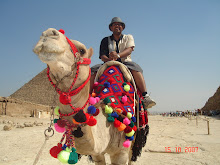- Satya yuga: 1,728,000 human years
- Treta yuga: 1,296,000 human years
- Dvapara yuga: 864,000 human years
- Kali yuga: 432,000 human years
This yuga cycle totaling 4.32 million years is also called a maha- or divya-yuga. One thousand such cycles, 4.32 billion years, make up one day of Lord Brahma, the god who governs the universe.
Each of Brahma's nights lasts as long as his day. Life is manifest on earth only during the day of Brahma. With the onset of Brahma's night, the entire universe is devastated and plunged into darkness. When another day of Brahma begins, life again becomes manifest.
Each kalpa (day of Brahma) is divided into 14 manvantara periods, each lasting 71 yuga cycles. Preceding the first and following each manvantara period is a junction (sandhya and sandhyamsa respectively) the length of a Satya-yuga (1,728,000 years).
Brahma lives 100 years, consisting of 360 days and nights (the Vedic year is based on the cycles of the moon, not the sun). Thus Brahma lives 100 x 360 kalpas = 36,000 days plus 36,000 nights. In human years, Brahma's life span lies far beyond our power of imagination: 72,000 x 4,320,000,000 human years = 311,040,000,000,000 human years.
The life span of Brahma is identical with the duration of the universe. This time span, called a maha-kalpa, is also the duration of one breathing in and out of Maha-Vishnu, the Personality of Godhead.
Maha-Vishnu lies down within the ocean of causality and sleeps. He is eternal, and He dreams the material world in His cosmic slumber. When he exhales, all the universes emanate from the pores of his skin, and a Brahma is born within each universe. When he inhales, Brahma dies, and He sucks the universes into his mouth and destroys them. With each exhalation, the entire process starts anew. This cycle goes on eternally and is therefore also called eternal time.
The Four Yugas : The Vedic Puranas describe the four yugas as follows
Satya-yuga, or the golden age, is the ideal age, characterized by virtue, wisdom, religion, and practically no vice or ignorance. Humans do not hate or envy each other. People live for about 100,000 years.
In Treta-yuga vice is introduced. The good qualities that humans had in Satya-yuga reduce by one third. People live for about 10,000 years.
In Dvapara-yuga uprightness is only half of what it was in Satya-yuga. The Vedas are divided into four parts, and only a few people study them. Sensual desires and diseases begin to well up, and injustice spreads in human civilization. People live for a maximum of 1000 years.
In Kali-yuga only one fourth of human uprightness remains and gradually reduces to nil as the age progresses. We now live in Kali-yuga, the iron age; the most degraded of the four ages (kali literally means "quarrel and hypocrisy").
In this age men are short lived and have less intelligence. They are especially lazy in performing their spiritual duties and exceedingly slow to surrender to the Lord. They are misled, frustrated and, above all, always disturbed. The qualities of religion (truthfulness, cleanliness, forbearance and mercy) and the qualities of life (intelligence, duration of life and bodily strength and beauty) all diminish. The maximum duration of human life is 100 years, and even that is rare.
In short,
Yuga: An era varying from 1-4 x 1200 x 360 solar years in which one 'year of the gods' is 360 earthly years.
Mahâyuga: A period of four yuga's, named Satya, Tretâ, Dvâpara, Kali, together covering 4.32 million years taking 1/1000 day of B r a h m â. Individual duration: 1200 x 360 years to multiply with a factor of respectively 4, 3, 2 en 1. To this constitute 360 earthly years one year of the gods.
Where We Are Now ?
According to the Vedic scriptures, we are now in the first day of the second half of the life of Brahma (even he gets old, and he is now 50). Within this day of Brahma, we are in the seventh manvantara (of Vaivasvata Manu), in the 28th turnover of its 71 yuga cycles.
Modern astronomy calculates the beginning of the present Kali-yuga at 2:27a.m. on February 20th in the year 3102 B.C.
